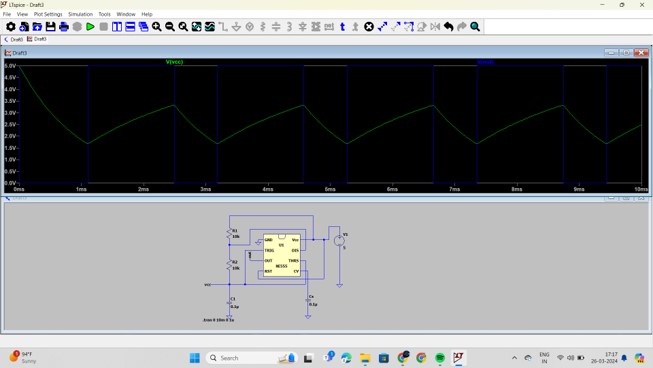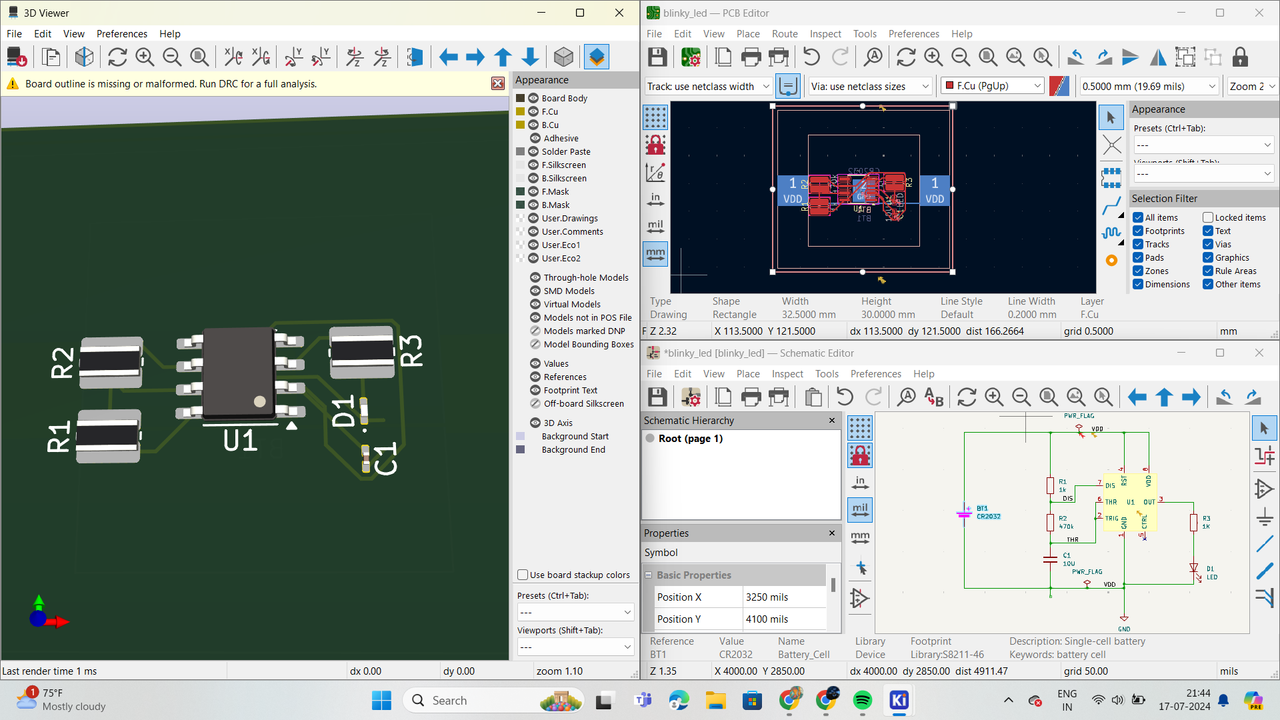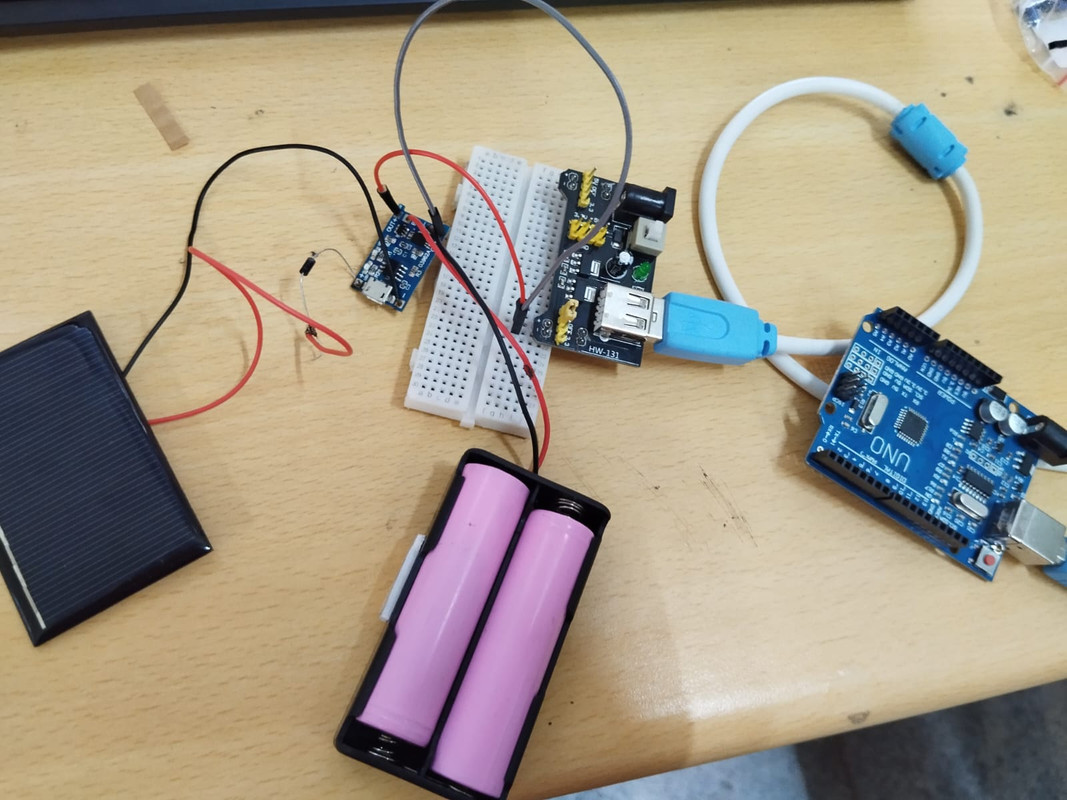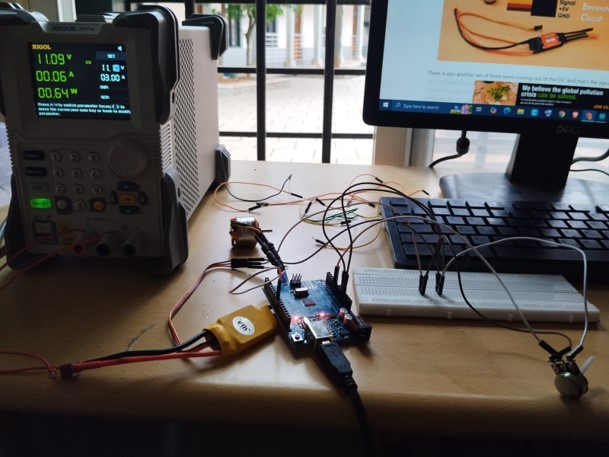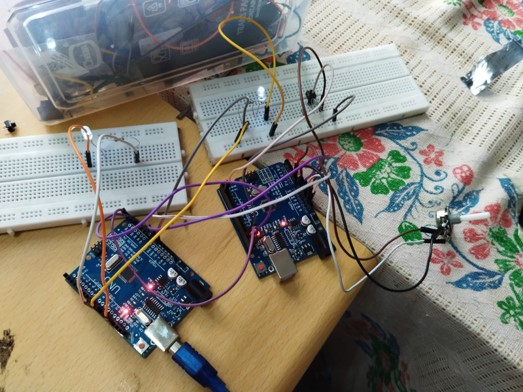
COURSEWORK
Lekhana.P's EV-RE-001 course work. Lv 1
| Lekhana.P | AUTHOR | ACTIVE |

Level 1,2 - coursework completed
29 / 9 / 2024
Level -1
Task 1:
LTspice and Kicad :
Astable Multivibrator using 555 Timer | Circuit, Duty Cycle, Applications - An astable multivibrator using a 555 timer is a commonly used electronic circuit that generates a continuous square wave output without requiring any external triggering. This configuration is often referred to as a free-running oscillator. With duty cycle of D = (R1+2R2)/(R1+R2).
This allows control over the proportion of time the output remains high compared to the time it stays low. I connected forward bias and reverse biased diode to get 50 % duty cycle .
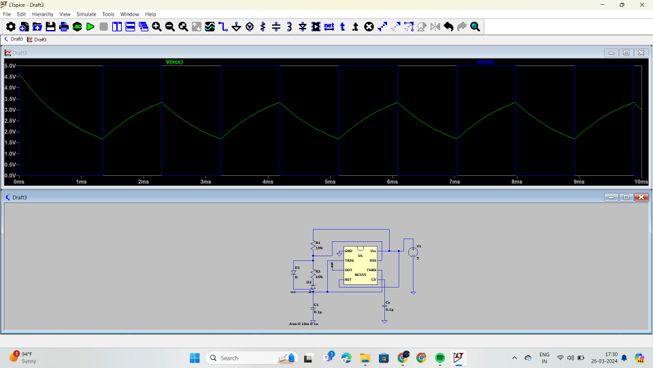
Task 2 :
Speed control of dc motor :
The dual H-Bridge L293D motor driver is a versatile IC designed for this purpose, allowing bidirectional control and speed regulation of DC motors.
L293D Motor Driver The L293D is an integrated circuit that contains two H-Bridge configurations, enabling it to control two DC motors independently. Each H-Bridge consists of four switches (transistors or MOSFETs) that can direct the current through the motor in both directions, providing forward and reverse control.
Speed Control Mechanism
Speed control of the DC motor is typically achieved using Pulse Width Modulation (PWM). PWM involves sending a series of high and low pulses to the motor driver, where the width (duration) of the high pulse determines the average power delivered to the motor. By adjusting the duty cycle of the PWM signal, the speed of the motor shaft can be controlled.

Task 3
Direction control of a Motor :
To control the direction of a DC motor using the L293D motor driver, you need to manipulate the input pins (IN1, IN2, IN3, IN4) of the L293D to change the current flow through the motor, thus reversing its direction. Direction Control Logic
Motor A (connected to IN1 and IN2):
Forward Direction: Set IN1 to HIGH and IN2 to LOW. Reverse Direction: Set IN1 to LOW and IN2 to HIGH.
Motor B (connected to IN3 and IN4):
Forward Direction: Set IN3 to HIGH and IN4 to LOW.
Reverse Direction: Set IN3 to LOW and IN4 to HIGH.

Task 4
Temperature Detection :
The LM35 is a low voltage, precision centigrade temperature sensor manufactured by Texas Instruments. It is a chip that provides a voltage output that is linearly proportional to the temperature in °C and is, therefore, very easy to use with an Arduino.
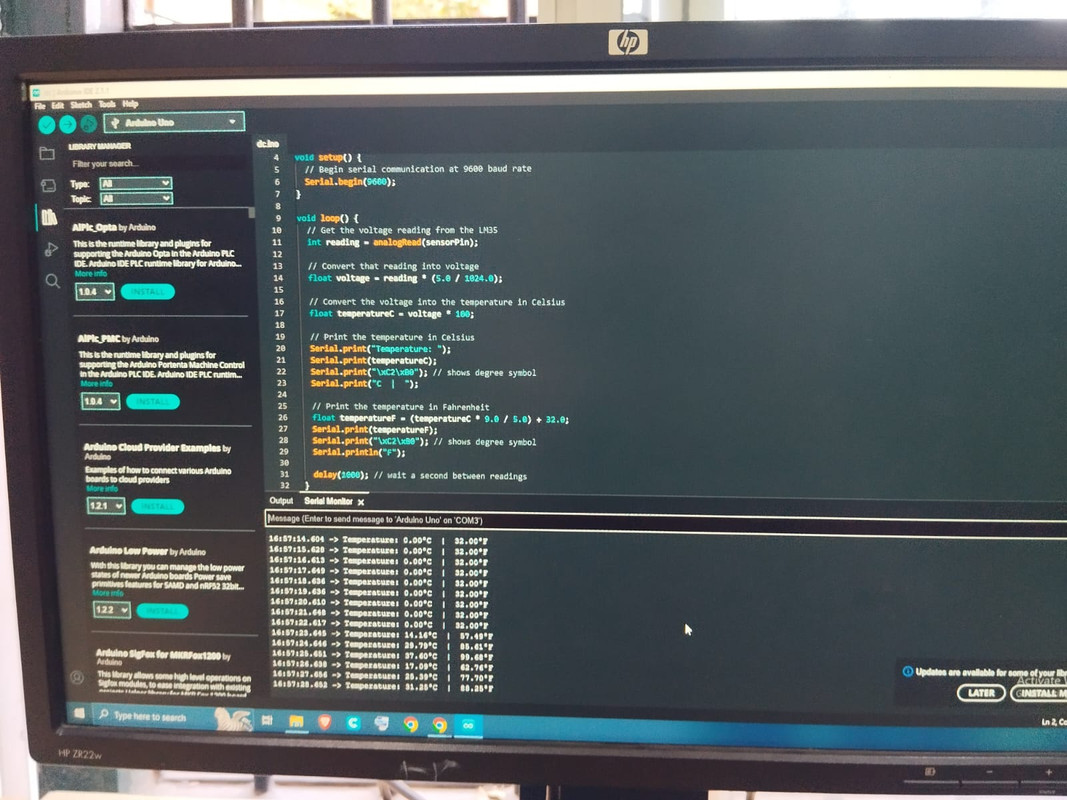
Task 5
Solar Panel
A silicon diode is a two-lead semiconductor that gates current flow in one direction.
solar panel using 1N4148 (run-of-the-mill) diodes
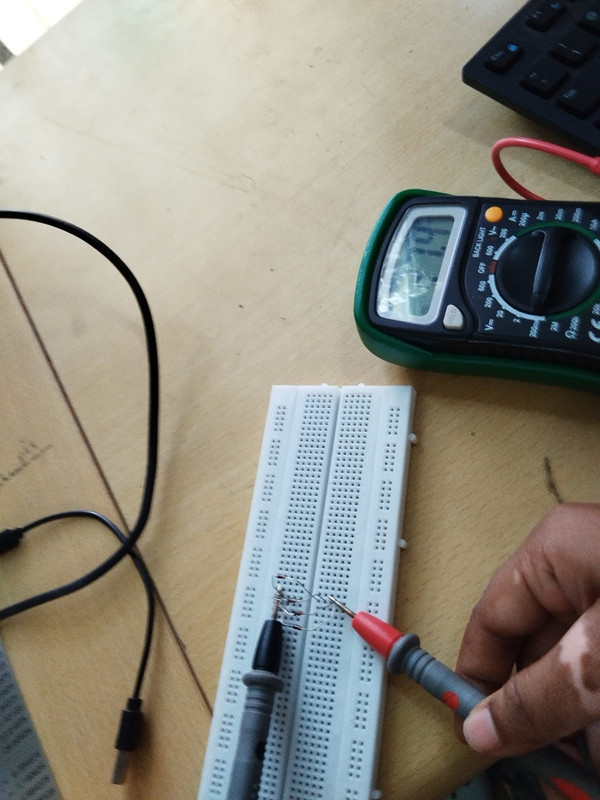
Task 6
Battery charging
Task 7
Understanding 555 timer and LDR :
An LDR (Light Dependent Resistor) varies its resistance based on the light intensity it receives. In darkness, its resistance is about 1 megaohm, while in full brightness, it drops to around 5k ohms.
A 555 timer IC is used as a comparator in this circuit, with pin 6 connected to the positive terminal. The output of the 555 timer goes high when the trigger pin (pin 2) is below one-third of the supply voltage and goes low when the trigger pin is above one-third of the supply voltage. The LDR is used to adjust the circuit voltage for light detection.
This circuit is cost-effective and easy to build. On a larger scale, it can be integrated with a solar cell as an energy source and a large light source for automatic nighttime operation, replacing manual control.

Task 8
AUTOMATIC DOOR OPENER SYSTEM:
worked on an automatic door opener system using a PIR sensor and Arduino, replacing the CD tray mechanism with a servo motor for controlling the door.PIR Sensor: Detects motion to trigger the door opening mechanism.Servo Motor: Replaces the CD tray mechanism, providing precise control for opening and closing the door. Through this project, I gained valuable knowledge and insights into interfacing sensors with microcontrollers, programming servo motors for smooth operation, and creating efficient automation systems. This experience enhanced my understanding of sensor-based automation and practical implementation of electronic components.

Level-2
Task 1:
SPI Communication :
SPI is one of the way of communication protocol which uses one master and multiple slave .
It uses four wire for communication like MISO,MOSI,SCK,SS.
MISO - Line to receive data from slave.
MOSI - Line to send data from slave.
SCLK - Master generates clock for slave.
SS/CS - This line can select one slave , with multiple slave multiple SS line.
In this task we are using one master aurdino uno and one slave . We connected 5V to Vin of slave .We communicated with pushbutton and led . Its communication speed is more 10mbps I2C and short range .
Task 2:
I2C communication :
Multi - master multi - slave communication protocol with use two wires SDA,SCL where the information is carried along the clock like read or write ,usually SDA carries address in binary low or high . Addressing is done by 7bits to communicate with 128 devices at max .
In this task instead of connected LCD Display we used one push botton to switch between the one master and one slave . Potentiometer to vary the intensity of light .
Task 3:
Speed Control of BLDC :
I completed the task of controlling the speed of a BLDC motor using an Arduino Uno, ESC (Electronic Speed Controller), and a potentiometer. Instead of using a LiPo battery, I opted for a stable power supply of 11V. By varying the potentiometer, the motor's speed was effectively controlled, demonstrating the precision of using this setup for speed regulation in a brushless motor system. This setup enhances efficiency and minimizes wear and tear, fulfilling the aim of the experiment.
I connected the ESC’s signal wire to a PWM output pin on the Arduino. The ESC’s power wires were connected to the 11V power supply, and the motor was wired to the ESC. The potentiometer was connected to an analog input on the Arduino, and I wrote a code that reads the potentiometer’s value, converts it into a PWM signal, and sends it to the ESC to control the motor speed.
Task 4 :
Make a Lithium-ion Battery Pack :
For this task, I created a lithium-ion battery pack by connecting three batteries in series. I used a multimeter to check the voltage of each individual battery to ensure they were functioning correctly. After connecting them in series, I measured the combined voltage across all three batteries, confirming the proper connection and voltage levels.
Connected three 3.7V lithium-ion batteries in series, the total voltage got is 11.4V (3.7V × 3)
Task 5 :
BMS :
This function contributes to maintaining the health and safety of the battery pack.
connecting three lithium-ion batteries with a 20 A Battery Management System (BMS), the primary function engaged with was voltage measurement. The BMS monitored the voltage of each battery cell, ensuring they operate within safe limits. This measurement is crucial because it helps determine the state of charge of the batteries and ensures they are balanced. By measuring the voltage, we can identify any issues, such as a cell being overcharged or undercharged, which could lead to damage.
However, there are additional functions of the BMS, such as temperature monitoring and current regulation, that can be performed in this task.

